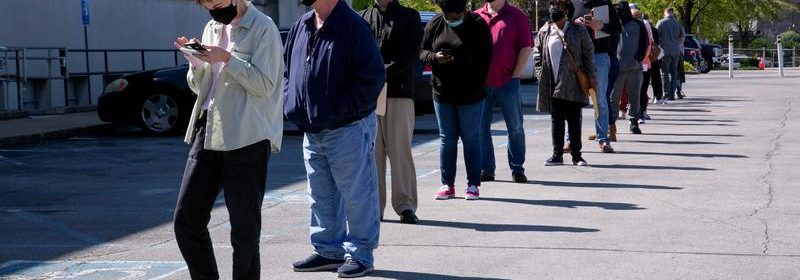U.S. private payrolls increase solidly in June- ADP

WASHINGTON (Reuters) – U.S. private payrolls increased solidly in June, but the pace of hiring slowed from the prior month as companies continued to scramble to find workers to meet surging demand as the economy’s reopening gains momentum.
Private payrolls increased by 692,000 jobs last month, the ADP National Employment Report showed on Wednesday. Data for May was revised lower to show 886,000 jobs added instead of the initially reported 978,000. Economists polled by Reuters had forecast private payrolls would increase by 600,000 jobs.
More than 150 million Americans have been fully vaccinated against COVID-19, allowing authorities to remove pandemic-related restrictions on businesses and mask mandates for people who have been inoculated.
The ADP report is jointly developed with Moody’s Analytics and was published ahead of the Labor Department’s more comprehensive and closely watched employment report for June on Friday. But it has a poor track record predicting the private payrolls count from the Bureau of Labor Statistics because of methodology differences.
The ADP report has in recent months overestimated the private payroll gains reflected in the BLS data after understating that growth through much of the jobs recovery, which started in May 2020.
“It remains difficult to use the ADP data to accurately predict the BLS data,” said Daniel Silver, an economist at JPMorgan in New York.
According to a Reuters survey of economists, private payrolls likely increased by 600,000 jobs in June after rising 492,000 in May. With government hiring expected to have increased by about 100,000, that would lead to overall payrolls advancing by 700,000 jobs in June.
The economy created 559,000 jobs in May. A shortage of willing workers is frustrating companies’ efforts to ramp up hiring. There were a record 9.3 million job openings as of April.
The precise cause of the labor crunch is a matter of fierce – often political – debate, but economists generally point to several factors, among them the unusually generous unemployment benefits, including a weekly $300 subsidy from the federal government, that were part of the Biden administration’s pandemic relief package. A lack of child care facilities as some centers which shut during the pandemic never reopened, is also keeping some parents home, and there is also indication that some workers remain worried about the health risks of returning to work.
At least 26 states mostly led by Republican governors are terminating federal government-funded unemployment benefits before the Sept. 6 expiration date. No evidence has emerged so far that the early terminations, which started on June 12 and will run through July 31, are pulling the unemployed from the sidelines into jobs, although the rolls of those receiving benefits is shrinking faster in those states.
A survey by job search engine Indeed found that while the vast majority of unemployed indicated they would like to start looking for work in the next three months, many did not express a sense of urgency about finding a new job. It showed rising vaccinations, shrinking savings and the opening of schools in the fall will be key catalysts for boosting job hunting.
About 9.3 million people are officially classified as unemployed. Job growth could, however, surprise on the upside this month. The Conference Board’s survey of consumers showed households extremely upbeat in their views of the labor market.
The survey’s so-called labor market differential, derived from data on respondents’ views on whether jobs are plentiful or hard to get, surged in June to the highest level since 2000.
Source: Read Full Article
